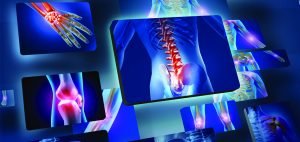
Physiotherapy and Pain
Physiotherapy and Pain

Chronic pain is long-lasting, ongoing pain that doesn’t go away and affects the quality of life of those affected. It is estimated that 60-83% of Australian aged care residents are affected. Alarmingly, chronic pain is often seen as ‘normal part of ageing.’ It isn’t!
Physiotherapists play a critical role in assisting people to live with chronic pain. Physiotherapists work across the lifespan continuum assisting patients with their pain with the aim of;
- Diminishing pain
- Improving quality of life where possible
- Preventing acute and sub-acute painful conditions developing into chronic pain
Types of pain
Acute pain is generally accepted to be the pain associated with acute tissue damage. The damage may be due to an event such as an injury or surgery or an active disease process within the tissues. The pain is considered to be driven by peripheral factors responding to the tissue event. As tissue structure is re-established, the inflammation process resolves and tissue healing takes place, pain will also resolve. Pain in this situation provides an effective warning system, protecting vulnerable tissue, and is a symptom related to a distinct pathological condition or surgical procedure. When pain does not resolve it is relabelled persistent pain, or chronic pain. Pain lasting for longer than three months can be classified as chronic pain.
Sometimes, after the original source of pain is healed or no longer present, chronic pain patients may continue to feel pain. This can also lead to reduced mood or even depression and avoidance or fear of normal movement and activities. This can then lead to more pain. Pain that becomes chronic is often linked to changes in the nervous system, when tissues become highly sensitised, creating abnormal pain responses. Patients move less, or move in ways to protect themselves from more damage.
Where Physiotherapy can help
- Education about pain processes
- Mobilisation, trigger point therapy & nutritional advice
- Pain coping strategies so that you have effective tools to manage episodes of pain
- Re-education of normal posture and movement patterns
- Workplace assessment and addressing ergonomic factors
- Advice and education about how and which exercises can help
- Graded exercise programs – slowly increase exercise tolerance without the “boom-bust”
- Address movement behaviours that you may have developed that are not helpful
- Liaison with GPs, psychologists and specialists where required
Physiotherapy intervention for chronic pain has a focus on empowering people to manage their conditions. Visit Duncraig Physio and ease your pain today.